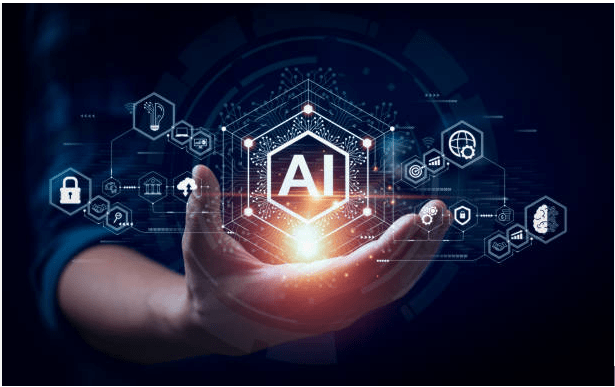Introduction:
Artificial Intelligence also known as “AI” is the simulation of human intelligence processed by electronic machines which are usually computers. Usually, it is made by coding. The code tells it how to perform the task. We can also call it a computer program or a software. It can perform different tasks such as translating, writing and other tasks depending upon the type. Artificial Intelligence software examples are Chat GPT, Sora, Bing Copilot, Google bard or Gemini, etc. It is a very useful software to help human-beings.
History of Artificial Intelligence:
The concept of artificial intelligence started during the time of ancient philosophers who wondered about human mind and innovators who built Mechanical beings. With the invention of computers and the growth of the discipline itself, AI had a boom in the middle of the 20th century. Early studies concentrated on problem-solving and symbolic reasoning. Machine learning has advanced significantly in the last few decades, especially deep learning methods that enable speech and image recognition.
The year 2022 was a significant year for AI because Generative Pre-Training Transformer also known as “GPT” applications gained wide acceptance. These models can create realistic and imaginative text formats, translate between languages, produce a variety of innovative content types, and provide you with helpful answers because they have been trained on vast volumes of text data.
Types of AI:
1. General AI:
It is also known as strong AI and is ultimate goal of artificial intelligence research. It’s the idea of robots being able to study and carry out any intellectual work that a human being can. Similarly, it also has the ability to learn, adapt, and apply knowledge to solve a variety of issues on its own, without the need for predefined limitations. The ultimate goal as told before means to build machines that are as intelligent and capable of reasoning as humans.
2. Narrow AI:
It is also known as weak AI is designed to excel particular tasks within predefines parameters, including image recognition or language translation. It is more specialized than general intelligence, but its use is restricted because it is incapable of generalizing or learning on its own outside of its preprogrammed functions. Further, many of the AI apps we use on a daily basis are the result of narrow AI.
3. Hybrid AI:
Now as it is clear from the name, Hybrid AI is a combination of different AIs into one. Hybrid AI takes the next step by combining symbolic AI with machine learning to get the best of both worlds: rule-based logic and knowledge representation from symbolic, alongside powerful pattern recognition capabilities and data-driven insights from modern deep learning models. This makes AI models more interpretable, increases their reasoning capabilities (so they can explain why predictions are being made) and improves the generalization capacity of them as well. Due to this reason, Hybrid AI is becoming more important than ever in areas like natural language processing (NLP), robotics and autonomous systems among other challenges that a single method of AI cannot address.
4. Superintelligence:
Superintelligence is a type of intelligence that exceeds human brain capabilities in all fields — even those where humans are pretty impressive like creativity, problem-solving and working with others. As AI progresses further, the idea of superintelligence brings both hope and dread. It has the capacity to both answer some of history’s most intractable global problems and also set Stylesheet. Conversely, it also raises profound ethical and safety concerns because creating an AI capable of outthinking and outmaneuvering humans represents a unique risk. So, It’s critical that the road to superintelligence is carefully controlled to optimize advantages while reducing potential risks as we move closer to this prospect.
Core Concepts of Artificial Intelligence:
1. What is machine learning?
Machine learning also called “ML” is a type of AI that let computers to learn without explicit programming. Machine learning algorithms become more adept at tasks by examining data, as opposed to following detailed instructions. Their ability to identify patterns and formulate predictions improves with the amount of data they process. Because of this, they can be used for a variety of tasks, such as suggesting movies you might like to watching or weeding out spam emails.
2. What is deep learning?
Deep learning is a type of artificial intelligence that draws inspiration from the composition and operations of the human. It uses artificial neural networks, which are complex algorithms somewhat based on networks of neurons. Large volumes of data can be used to train these networks to find patterns and anticipate outcomes. Many AI applications nowadays, such as self-driving cars and facial recognition software, use deep learning.
3. Natural Language Processing (NLP) in AI:
Natural Language Processing in AI involves the interaction between computers and human languages. It is also known as “NLP”. It makes it possible for machines to understand, interpret, and generate human language in such a way that is meaningful and contextually relevant. Large volumes of textual data are processed by NLP algorithms, which also extract information and generate insights. Text analysis and manipulation techniques include sentiment analysis, stemming, and tokenization. NLP supports a number of applications that improve the efficiency and understanding of human-computer interaction, including sentiment analysis, text summarization, chatbots, and language translation. Its developments keep encouraging innovation in AI, changing the way we engage with technology, communicate, and analyze data.
4. Computer Vision:
Computer vision is a field of artificial intelligence and its goal is to have computers see and understand the world similarly to humans. To do this, it makes use of strong algorithms and digital photos and movies. Computer vision systems are able to recognize things, comprehend scenes, and even follow motion by examining these images. The medical diagnostics, product inspection, and self-driving car industries are just a few of the businesses that are being greatly impacted by this technology. As computer vision continues to develop, we can expect even more exciting applications to emerge in the future.
Applications of AI:
1. AI in Healthcare:
AI in healthcare revolutionizes diagnostics, treatment, and patient care through its ability to analyze vast datasets swiftly and accurately. Machine learning algorithms are able to identify patterns in medical images, which can help with more accurate early disease identification. By projecting patient outcomes, predictive analytics maximizes the allocation of resources and individualized treatment approaches. Clinical documentation is improved by natural language processing, which raises the standard of correctness and productivity in medical records. Virtual health assistants improve patient involvement by providing round-the-clock assistance, responding to questions, and setting up appointments. Even while AI is an effective tool, it’s crucial to keep in mind that it helps medical professionals rather than replacing them.
2. AI in Finance:
Artificial intelligence is shaking up the financial world. AI can analyze enormous datasets to uncover patterns and trends that are hidden from human view. This facilitates data-driven decision-making for financial organizations regarding loan approvals, fraud detection, and investment decisions. AI is capable of, for instance, analyzing a client’s financial history to suggest individualized investment possibilities or spot transactions that are suspect enough to be fraud. It is also automating a lot of repetitive financial duties, freeing up experts to work on more difficult problems. In general, AI is improving the insight and efficiency of finance.
3. AI in Education:
Artificial intelligence is revolutionizing education by assisting teachers and personalizing the learning process. AI instructors may adapt to a learner’s speed and comprehension level, offering focused instruction and explanations. For children who study ahead of time or who want additional support, this can be quite beneficial. In order to free up teachers’ time to concentrate on what they do best—guiding and encouraging students—AI may help automate processes like scheduling and essay marking. Although AI cannot take the role of instructors, it can be a useful tool to improve education and give teachers more authority.
4. AI in Cybersecurity:
AI promises wide-ranging implications in the realm of cybersecurity. It is changing the way we secure assets and digital experiences, with advanced methods to protect against evolving threats from smart adversaries. Artificial intelligence — specifically using machine learning algorithms to analyze huge data sets for patterns and anomalies pinpointing a cyberattack happening. This proactive strategy allows the company to respond more quickly which helps to reduce any other risks from manifesting post-incident. AI-powered systems, however, can continue to learn and grow with each new threat they encounter — keeping one step ahead of cybercriminals. AI integration in cybersecurity is necessary for all organizations and people to have better defenses against evolving cyber threats.
The Future of AI:
1. Ethics and AI:
The development of AI presents significant ethical issues. Large datasets are used to train AI systems, and these datasets may have biases that are representative of the real world. This may result in influenced or unfair outcomes when applying for jobs or getting a loan, for instance. Transparency is an additional issue. Certain AI systems, especially advanced ones, can be like “black boxes”—it’s difficult to figure out how they make the decisions they do. Due of their lack of transparency, it may be challenging to hold them responsible for errors. Developers and politicians are attempting to tackle the major ethical concerns of ensuring justice, transparency, and accountability in AI.
2. The Challenges of AI:
Artificial intelligence presents a variety of dynamic issues. Concerns about employment displacement, unfair decision-making, privacy invasion, and other ethical issues surface when artificial intelligence is misused. It is still very difficult to ensure that AI systems are open and responsible, particularly as algorithms get increasingly complex and self-governing. Scalability, compatibility, and data quality are examples of technical obstacles that continue to impede the broad use of AI systems. And then there’s the ongoing issue of how AI affects economic dynamics, escalating inequality and changing the face of traditional employment. Finding a balance between ethical deployment and innovation is essential for navigating the challenging landscape of artificial intelligence.
Conclusion:
In conclusion, one of the most influential and revolutionary technological developments of today’s time is artificial intelligence. It has transformed a number of industries, including healthcare, banking, transportation, and entertainment, by simulating human intelligence. Even with its enormous potential, there are still unanswered questions about moral consequences, employment displacement, and misuse possibilities. However, AI has the potential to improve quality of life, increase productivity, and solve difficult problems when used appropriately. To guarantee that the benefits of AI are maximized while minimizing its risks, it is critical that ethical frameworks, transparency, and collaboration be given top priority as we continue to manage its evolution.


Excellent post however I was wondering if you could write a litte more on this topic? I’d be very thankful if you could elaborate a little bit further. Kudos!
Thanks for your comment. We added some more topics according to your request. Enjoy reading the article.